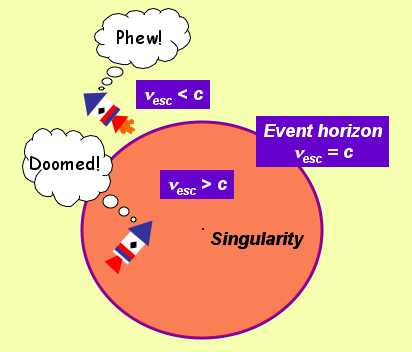Event Horizon
| The ‘event horizon’ is the boundary defining the region of space around a black hole from which nothing (not even light) can escape. In other words, the escape velocity for an object within the event horizon exceeds the speed of light. The name arises since it is impossible to observe any event taking place inside it – it is a horizon beyond which we cannot see. The event horizon therefore effectively hides the singularity at the centre of the black hole, a boon for astrophysicts discomforted by the breakdown of the laws of physics at such a point. The cosmic censorship conjecture states that all singularities are hidden by an event horizon and this failure of the laws of physics is not observable. In theory, any mass can be compressed sufficiently to form a black hole. The only requirement is that its physical size must be less than the radius of the event horizon. For example, our Sun would become a black hole if its mass was contained within a sphere about 2.5 km across. |
|
Study Astronomy Online at Swinburne University
All material is © Swinburne University of Technology except where indicated.


